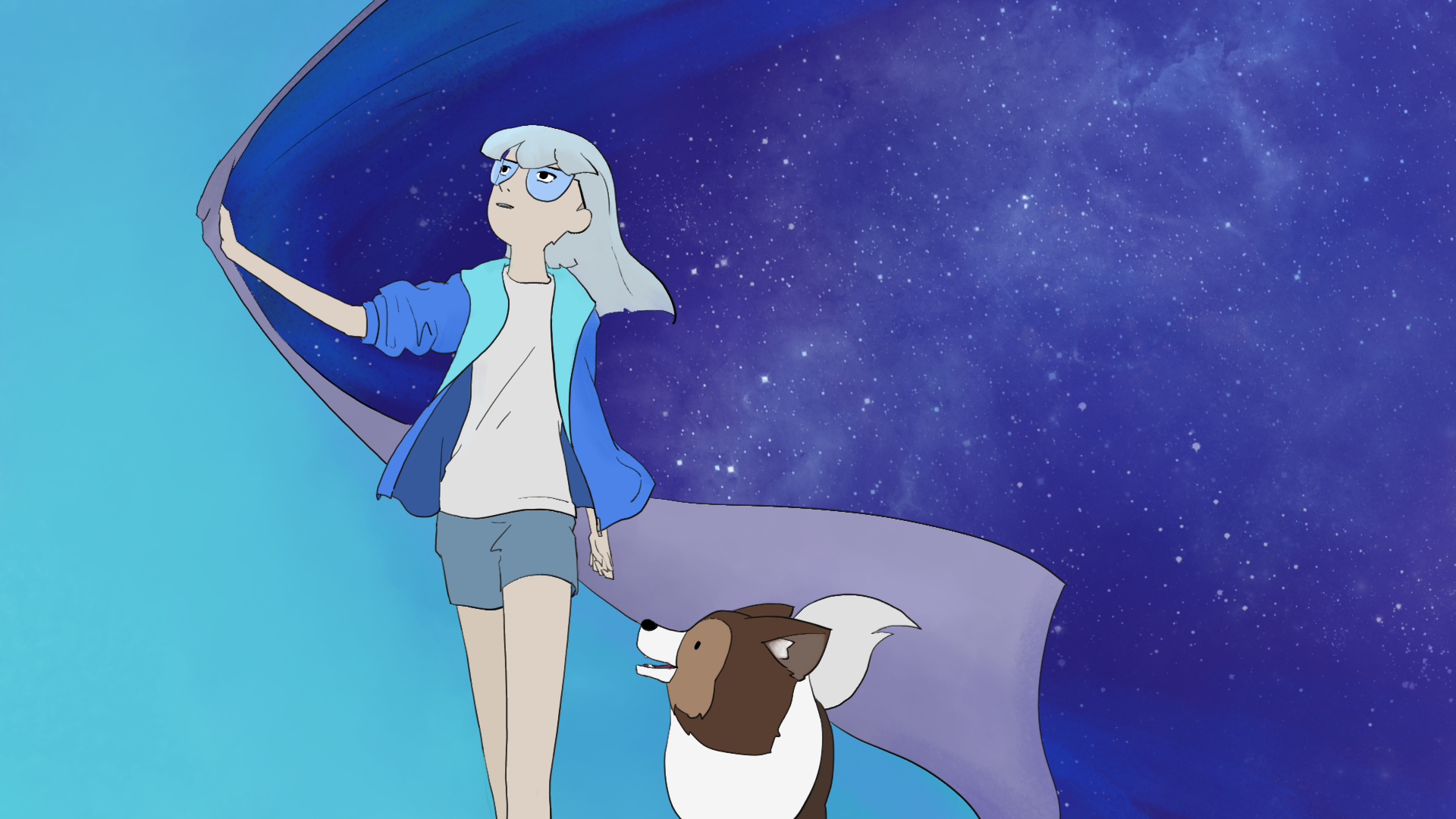Midnight Garden
Directed by SAPPHIRA CHEN
United States of America, 2022
Experimental
The ecstatic joy of nature.
Read our interview with Sapphira below to learn more about the film.
SAPPHIRA CHEN
Learn More
Est. Reading Time: 3 Minutes
On Fluidity
M The sequences of the girl walking down the stairs and dog running in the park are incredibly smooth and stunning! Please tell us about your process of creating seamless fluidity on screen - how much time do you spend fine-tuning and polishing movement? And please tell us about how you integrate movement with unique transitions to further emphasize fluidity, immersion and spontaneity.
S Thank you Mark! The sequences start from a rough animatic. I had both shots planned out in the simplest line, and built clean line animation for them. I tied down the rough animatic until it’s on at least eights (most of them are on fours) so that I can have a clear view of what’s going to happen and draw the clean line animation. I separated different elements into different layers so it’s easier to make adjustments and keep track of things. Each of those two shots took about two weeks, from rough animation to a finished sequence.
S As for how I came up with those transitions, most were drawn from dreams and childhood memories. For example, looking down from the stairs was pretty much the same view I had in my childhood home. I used to looked down from the top of the stairs and see these whirling patterns. Shot designs were also driven by the impression and feelings upon the objects. In terms of the factory line, I was thinking of a stiff, formal movement of the machines so I had a close-up shot of one slowly moving away. And the white giraffe invoked so much awe in me, I just wanted to show it’s dinosaur-like height so I had him walk over the camera’s head. It was a lot of fun!
On Process & Discovery
M In making and finishing the film, what did you discover and learn that you might adopt or further explore in future projects?
S One useful thing I picked up from making this film is that in terms of timing the whole film through storyboards, the timing will be much more accurate if I could imagine what the complete film would look like instead of just looking at the storyboard. Because a storyboard animated on twelves or eights will definitely feel different in the pacing of movement and flow of emotion from the finished film. So when I set the timing of certain scenes in my storyboard, I was timing from the perspective of imagining how the scenes would look in the final film.
It’s the same when working with my composer on the music in the early stages of my film. I had him working on the music from the animatic and honestly, it was hard to get the accurate type of music without seeing the complete film. Sometimes an accurate colour script is surprisingly more useful for my composer to write the music than a well-drawn animatic in black and white, because the colour script is more precise in mood and tone. Instead of watching the black-and-white animatic, my composer can get more of an idea from looking at a single coloured frame such as an intense red against a stiff dark grey, or a clear blue ocean with bright orange fish in the water. We initially had the music for the ocean scene way slower than how it sounds in the final version. It was until I finished the shot that we realized ‘oh it should be way more playful than this calm and relaxing piece of music’. So for my upcoming projects, I will be more accurate with my requirements of music by imaging the final visuals of the film instead of just looking at the storyboards.
Mark’s Final Thoughts
I think Sapphira offers great advice about the importance and value of colour in creating new pieces of music. Colour and music have common emotional qualities so discussing and showing certain colours are excellent ways to articulate your vision for the film's music.
The founder of Hommage, Mark Shaba published this interview on 28.06.2022. Mark is a filmmaker from Victoria, Australia. He respectfully acknowledges the past and present traditional owners of the land on which he creates, promotes and screens art, the Wurundjeri people of the Kulin nation who are the custodians.














